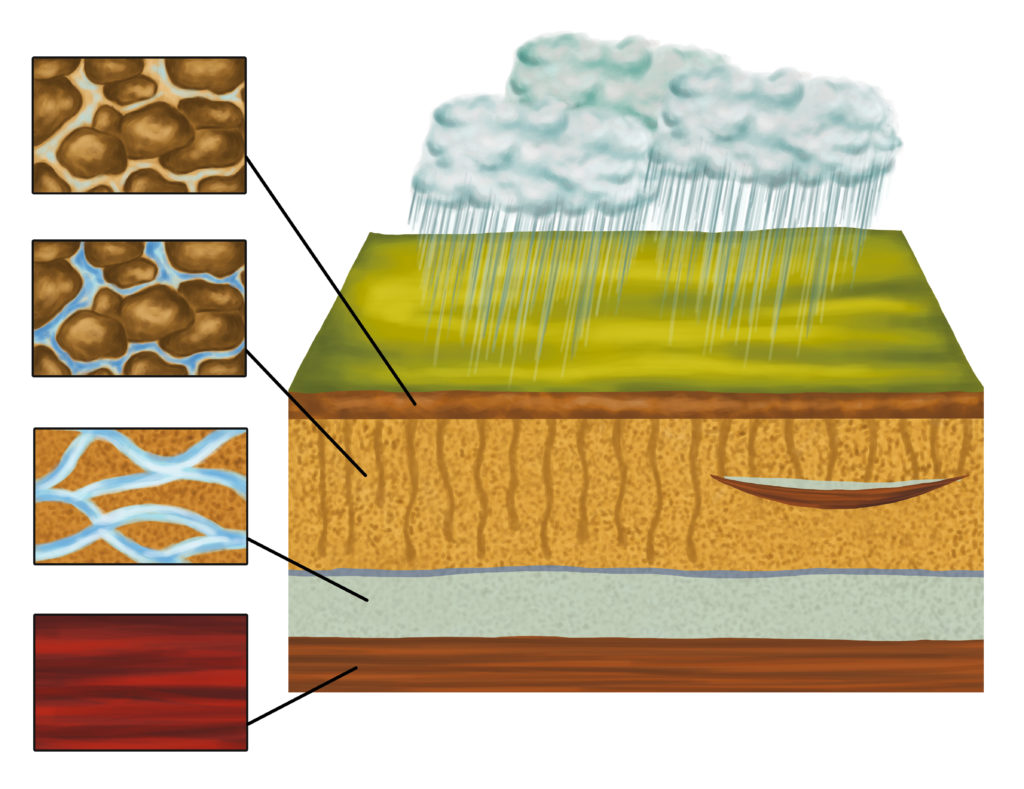Infiltration rate is the speed at which rainwater is able to be absorbed into and travel vertically through the ground and toward the groundwater level. It is usually expressed in units of inches per hour.
The rate at which water can travel through the ground depends on the kind of soil of which the ground is comprised and can range from 0.1 inch per hour to as much as a couple of inches per hour. Soils that are sandy will infiltrate more water than soils that contain more clay material.
There can also be soils that can have an infiltration rate of zero inches per hour.
Where It Is Used
In stormwater management design is where you will find infiltration rate information being used. If local regulations require a stormwater management system to be designed for infiltration if possible, the design engineer would first want to know if a proposed system will even be able to infiltrate at all.
If infiltration is determined to be possible, knowing the infiltration rate in the area of the proposed stormwater management system will allow the design engineer to properly size the system as well as calculate how long it would take for the system to dewater for certain rainfall events. If it is determined that the dewatering time does not meet certain requirements, the design engineer would know to adjust the design.
How Infiltration Rate Is Determined
The infiltration rate for an area chosen for a stormwater management system is determined through field testing by a qualified soils specialist.
This person will work with the design engineer to determine the locations and depths of required testing before visiting the project site to do the infiltration testing.
Other Information Obtained During Field Tests
Besides the infiltration rate, there is other information that can be obtained from infiltration testing that may be of value during the design of a stormwater management system.
The infiltration testing results report should show the soil profile of the ground that has to be exposed to get to the depth of the required testing. The report should also note the presence of any limiting layers that could prevent further infiltration of water into the ground. These limiting layers could include bedrock and a high groundwater table.
A Key Part of a Stormwater Management System Design
Having the infiltration rate for a proposed stormwater management system is a key part of the design of the system. If you use assumptions about the infiltration rate for a design and later find out that the actual tested infiltration rate is significantly different, you could end up spending a lot more time and effort having to redesign the system than is necessary.
If a system is required to at least consider the possibility of infiltration, it might be worth considering getting infiltration testing scheduled as soon as is practical.
Related: Stormwater Management (A Guide for the Non-Professional)



